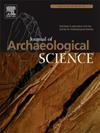An AI-assisted workflow for object detection and data collection from archaeological catalogues
IF 2.5
1区 地球科学
Q1 ANTHROPOLOGY
引用次数: 0
Abstract
Reconciling the ever-increasing volume of new archaeological data with the abundant corpus of legacy data is fundamental to making robust archaeological interpretations. Yet, combining new and existing results is hampered by inconsistent standards in the recording and illustration of archaeological features and artefacts. Attempts at collating data from images in existing publications first involve scouring the substantial body of existing literature, followed by extracting images that require onerous manual preprocessing steps, like re-scaling, re-orienting, and re-formatting. While the sample sizes of such manual analyses are curtailed by these problems, recent developments in AI and big data methods are poised to accelerate and automate large syntheses of existing data.
This paper introduces an AI-assisted workflow capable of creating uniform archaeological datasets from heterogeneous published resources. The associated software (AutArch) takes large and unsorted PDF files as input, and uses neural networks to conduct image processing, object detection, and classification. Objects commonly found in archaeological catalogues – like graves, skeletons, ceramics, ornaments, stone tools, and maps – are reliably detected. Accompanying elements of the illustrations, like North arrows and scales, are automatically used for orientation and scaling. Outlines are then extracted with contour detection, allowing whole-outline morphometrics. Detected objects, contours, and other automatically retrieved data can be manually validated and adjusted via AutArch's graphical user interface.
While we test this workflow on third millennium BCE Central European graves and Final Neolithic/Early Bronze Age arrowheads from Northwest Europe, this method can be applied to the vast number of artefacts and archaeological features for which shape, size, and orientation holds technological, functional, cultural, and/or temporal significance. This AI-assisted workflow has the potential to speed-up, automate, and standardise data collection throughout the discipline, allowing more objective interpretations and freeing sample sizes from budget and time constraints.
一个人工智能辅助的工作流程,用于从考古目录中检测对象和收集数据
调和不断增加的新考古数据量与丰富的遗产数据语料库是做出强有力的考古解释的基础。然而,由于在记录和说明考古特征和文物方面的标准不一致,将新的和现有的结果结合起来受到阻碍。从现有出版物中的图像中整理数据的尝试首先涉及对现有文献的大量搜索,然后提取图像,这需要繁重的手动预处理步骤,如重新缩放、重新定向和重新格式化。虽然这些问题限制了人工分析的样本量,但人工智能和大数据方法的最新发展有望加速现有数据的大规模合成并实现自动化。本文介绍了一种人工智能辅助工作流,能够从异构发布资源中创建统一的考古数据集。相关软件(AutArch)将未排序的大型PDF文件作为输入,并使用神经网络进行图像处理、对象检测和分类。考古目录中常见的物品——如坟墓、骷髅、陶瓷、装饰品、石器和地图——都能被可靠地探测到。插图的附属元素,如北箭头和尺度,自动用于方向和缩放。然后通过轮廓检测提取轮廓,实现全轮廓形态测量。检测到的对象、轮廓和其他自动检索的数据可以通过auarch的图形用户界面手动验证和调整。当我们在公元前第三个千年的中欧坟墓和来自西北欧的新石器时代/早期青铜时代的箭头上测试这个工作流程时,这个方法可以应用于大量的人工制品和考古特征,它们的形状、大小和方向具有技术、功能、文化和/或时间意义。这种人工智能辅助的工作流程有可能加速、自动化和标准化整个学科的数据收集,允许更客观的解释,并从预算和时间限制中释放样本量。
本文章由计算机程序翻译,如有差异,请以英文原文为准。
求助全文
约1分钟内获得全文
求助全文
来源期刊

Journal of Archaeological Science
地学-地球科学综合
CiteScore
6.10
自引率
7.10%
发文量
112
审稿时长
49 days
期刊介绍:
The Journal of Archaeological Science is aimed at archaeologists and scientists with particular interests in advancing the development and application of scientific techniques and methodologies to all areas of archaeology. This established monthly journal publishes focus articles, original research papers and major review articles, of wide archaeological significance. The journal provides an international forum for archaeologists and scientists from widely different scientific backgrounds who share a common interest in developing and applying scientific methods to inform major debates through improving the quality and reliability of scientific information derived from archaeological research.
 求助内容:
求助内容: 应助结果提醒方式:
应助结果提醒方式:


